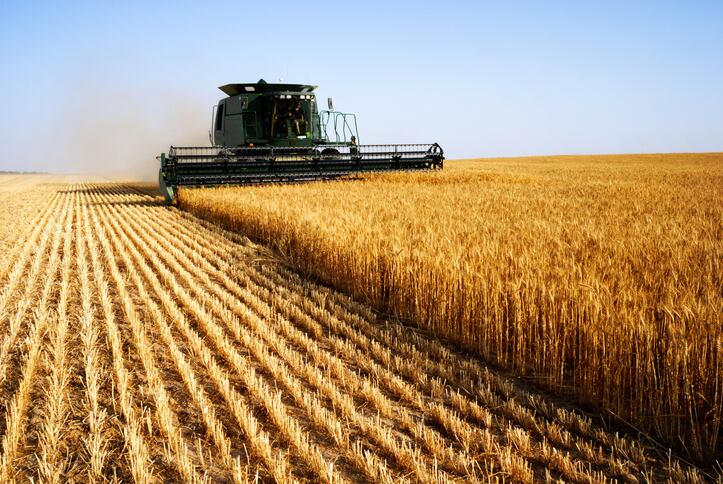The country has become “irrelevant”, according to one analyst. Now at a 50-year low, it is sixth in the list of global exporters, though it was not long ago when Australia vied with Canada for second place.
In its place the Black Sea region and Argentina have stepped up as Australian shipments flounder. Major grain producing regions which been badly affected by drought since last year, and especially the south east of the country, have been focusing enough grain for domestic demand. As a result, Australia’s exportable surplus has been hit hard.
Yet just two years ago, Australian wheat exports were over 60% higher than normal, amid low prices and strong production.
Russia and Ukraine have stepped in to fill the void and claim a large slice of market share in Asia. Russia alone has increased its exports from 18m tonnes six years ago to half of its 74m-ton wheat harvest, according to the USDA.
By contrast, Australia’s dryland wheat crop, which is prone to vary depending on weather conditions, is estimated to fall after last year’s drought-affected harvest. In all, wheat exports are forecast at 12m tonnes this year, with Western Australia likely to provide half of all shipments.
“Typically, 70% of Australian wheat production is exported, but it’s expected to face stronger competition from Black Sea wheat exporters, particularly for feed wheat,” the USDA said in a recent analysis.
According to a 2016 Australian Export Grains Innovation Centre report about Russia, a directive from the government there led to the sudden increase in grain production.
The move came after Western sanctions following Russia's annexation of Crimea in 2014 caused a downturn in the economy, prompting the government to place more emphasis on food security.
Ukraine has also managed to capitalise, having doubled its wheat export sales in the last six years. It is expected to export all but 10m tonnes of its 19m-ton harvest this year.
Russia and Ukraine have been redoubling their efforts to cash in on Indonesia, the world’s biggest wheat importer Australia’s biggest customer, which buys about a quarter of its overall exports. Russia’s sales have tripled over the last three years to 1m tonnes, while Australia’s have dropped from a usual 4m tonnes to 2.4m, according to S&P data.
Ukraine is even stronger, having grown its exports to Indonesia from 1.9m tonnes to 2.4m tonnes in the last year.
Meanwhile, Argentina’s charge up the grain export league table has caught Australia off guard. As another major southern hemisphere producer that capitalises on demand from the north during its winter months, it has been increasing wheat yields at a faster rate than Australia.
Indeed, it is on course to have doubled the wheat it has available for sale on international markets to up to 15m tonnes in a decade.
In the first five months of this year, Argentina shipped 1.6m tonnes to the important Indonesia market, while Australia’s exports plunged by more than two-thirds year on year to under 400,000 tonnes.
On the home front, Australia has been forced to import grain for the first time since 2007. But things are looking up just a little, according to predictions by Australian Bureau of Agricultural and Resource Economics and Sciences (Abares).
Abares expects spring to bring more favourable conditions, and has speculated that Australia's grain production could actually lift this year.
"The winter crop prospects at this stage of the season look better this year than last year so we're expecting the winter crop production will be up about 20% cent compared to last year," said Abares chief analyst Peter Gooday in a report.
He noted, however, that quantities will still be 10% below the longer-term average.
Despite the impact of drought, a survey of farmers by agri-lender Rabobank suggests that farmer confidence has been improving.
The bank's chief executive Peter Knoblanche said many farming regions had struggled through an incredibly dry autumn.
"A number of positives are at play for the agriculture sector, including improvements in some commodity prices, such as dairy and wheat and a softening in the currency," Knoblanche said.
"But we're not expecting that to translate into an immediate increase in export values."

